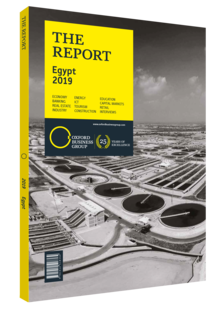Mohab Mameesh, Chairman, Suez Canal Authority (SCA); and Chairman, Suez Canal Economic Zone (SC Zone): Interview

Interview: Mohab Mameesh
How are fluctuations in energy prices impacting shipping trends globally?
MOHAB MAMEESH: Ship bunker fuel prices represent 40-50% of a vessel’s operation costs, and therefore account for a significant portion of the cost of shipping, which is in turn reflected in commodity prices. As oil prices started to rise again after the Organisation of the Petroleum Exporting Countries agreement in late 2016, the decrease in production led to an increase in bunker prices, which consequently increased the savings for vessels transiting the Suez Canal compared to alternative routes. In combination with the entrance of the US into the energy export market, this has driven changes in the structure of trade for the energy market, resulting in the creation of new trade routes and requiring the implementation of more flexible pricing policies to increase competitiveness and attract more traffic through the Suez Canal. This is especially true as some alternative routes, such as the Cape of Good Hope, have become more cost competitive.
The SCA is seeking to attract a larger number of liquefied natural gas carriers, as well as container and bulk vessels heading to Asia from the US, by making this route more competitive compared to other alternative routes. Technological developments also play a vital role in the shipping industry, as larger, more efficient and environmentally friendly vessels are developed. It is important that we establish flexible pricing policies that are in line with recent developments in ship technology in order to continue improving competitiveness.
In what ways can Egypt compete more effectively as a shipping and logistics hub?
MAMEESH: The government is currently executing a strategic plan that aims to transform Egypt into a global transport and logistics hub. It is focused on the development of ports, especially in East Port Said and Ain Sokhna, as well as the creation of logistics centres where it will be possible to boost the added value of export industries. This strategy also depends on enabling the transport sector to obtain a larger share of the volume of regional and international transport through the development of a multimodal transport system.
The goal is to provide transport services with the highest efficiency, safety and security standards at an extremely low cost, while meeting all international environmental standards. This will require increasing the efficiency of the railway system, and establishing a new network for cargo transportation; increasing the connections between centres of production and ports; and raising the efficiency of the road network to accommodate the expected increases in cargo traffic, through a combination of a smart transportation system, electronic toll collection and the management of commercial vehicles, as well as by enhancing the Customs system, legislation and rules. Through the execution of the various points of this strategic plan, Egypt will be able to access many markets, especially African ones, in particular through the Common Market for Eastern and Southern Africa.
How can trade and investment in the SC Zone be made more business-friendly?
MAMEESH: The importance of the development project of the SC Zone lies in cementing the status of the Suez Canal region as a new pivotal centre for regional and international development. The ports at East Port Said and Ain Sokhna will be transformed into centres for distribution, trans-shipment, warehousing and logistics services, bunkering, shipbuilding and repair. This development project provides many opportunities to improve different economic activities and establish integrated business centres in a way that will support the competitiveness of the Suez Canal Area and its potential to attract foreign investment, infrastructure investment, and industries and services to promote growth. Egypt will then rise to the level of other emerging markets, such as India, the Philippines and Vietnam.
You have reached the limit of premium articles you can view for free.
Choose from the options below to purchase print or digital editions of our Reports. You can also purchase a website subscription giving you unlimited access to all of our Reports online for 12 months.
If you have already purchased this Report or have a website subscription, please login to continue.

